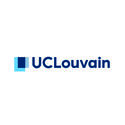In short
One of the common causes of foodborne intoxications is Bacillus cereus sensu lato, a bacterium which can cause both vomiting and diarrhoea, dependent on the toxins present in this pathogen. There remain a lot of uncertainties about factors determining whether or not certain strains of this bacterium can cause disease. This project aims to develop and implement different tools for the characterization of different B. cereus bacteria and for the rapid discrimination between pathogenic and harmless variants of this species and thus for better risk estimation of B. cereus in food.
Project description
B. cereus sensu lato
B. cereus sensu lato can be subdivided into 8 subspecies or 7 clades (grouping of subspecies by evolutionary relatedness). Some of them can cause foodborne disease like:
- Emetic syndrome, caused by the pre-produced toxin dodecadepsipeptide cereulide and its isoforms
- Diarrheic syndrome, caused by enterotoxins produced in the intestinal system
Toxicity and action limit
Currently, the Belgian Federal Agency for Safety of the Food Chain (FASFC) defined the action limit of 105 CFU/g or 105 CFU/ml for presumptive B. cereus in food based on an advice of the scientific committee (SciCom 23-2018). However, foodborne outbreaks with much lower counts have been described. Also factors determining B. cereus s.l. toxigenicity and the differences between the subspecies or clades remain largely unknown. Additionally, different isoforms of cereulide have recently been described, showing variable levels of toxicity.
Risk estimation
In Belgium, the National Reference Laboratory (NRL) for foodborne outbreaks, located under Sciensano’s foodborne pathogens service, realises the enumeration of presumptive B. cereus in food products (according to ISO 7932) and performs detection of genes related to toxigenicity by PCR. To estimate toxigenicity based on toxin gene presence alone, has been proved difficult.
Next to this, the Sciensano service organic contaminants and additives detects cereulide in food using an UPLC-MS/MS method according to ISO 18465:2017. This method however does not detect nor discriminate the different cereulide isoforms, hindering reliable risk estimation.
New method for B. cereus sensu lato characterisation
In this project, a selection of isolates from B. cereus sensu lato will be characterized by whole genome sequencing (WGS) and Fourier-transform infrared (FTIR) spectroscopy will be evaluated as a rapid and cost effective approach for characterisation into subspecies or clade level. Extrinsic and intrinsic factors influencing toxin production and toxicity will be evaluated. This will be done by applying:
- WGS, UPLC-MS/MS methods for cereulide isoform quantification
- immunological methods for enterotoxin detection
- transcriptomics and cell-based toxicity assays after differing bacterial growth conditions
Service(s) working on this project
Partners




